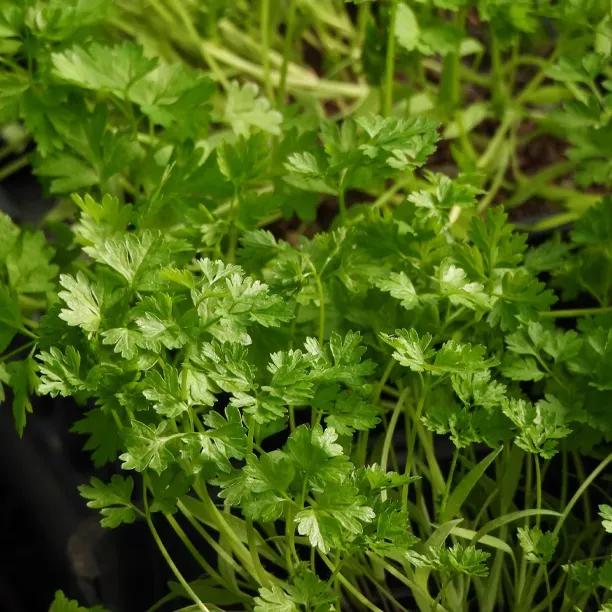Garden Chervil Plants
The details
Anthriscus cerefolium
Pot Grown Herbs- Height: 30-60 cm
- Spread: 30 cm
- Colour: light green foliage, white flowers
- Flowers: summer
- Uses: culinary, herb
- Spacing: 25 - 30 cm
- Taste: delicate parsley
- Harvest: when 10 cm tall, all year round
- Life: hardy annual/biennial
- One of the four fines herbes
Recommended extras
Description
Anthriscus cerefolium
When young, Chervil (AKA French Parsley) looks like cow parsley with its ferny, light green leaves and umbels of white flowers, making it a pretty plant and well worth letting a few run to seed purely for decoration. As a culinary herb, however, you only want the soft, delicate leaves, which take on a purple tinge over the winter. They taste like a delicate parsley, with a touch of aniseed, similar to that found in dill. Technically speaking, it is a hardy annual, but with protection in winter it serves as a biennial.
Browse our range of herbs and vegetables.
Features:
- Height: 30-60 cm
- Spread: 30 cm
- Colour: light green fern like foliage, clusters of white flowers like cow parsley
- Flowers: spring/summer
- Uses: culinary, herb
- Spacing: 25 - 30 cm
- Taste: delicate parsley with anise overtones
- Harvest: when 10 cm tall or at 6-8 weeks old, then all year round
- Life: hardy annual / biennial in warm locations or with winter protection
Growing Chervil
Any well-drained soil is fine, and it likes chalk. Shade at midday during the summer is good, so try inter-planting chervil with larger herbs, vegetables, or under deciduous shade that will leave the chervil enough light in winter. Protect it with a cloche or fleece, and keep on harvesting the leaves throughout the cold months. Water the plants you want to harvest regularly in dry weather to stop them bolting.
Chervil should be harvested during the summer when about 10 -15cm tall, when the leaves are at their most delicious, and to prevent flowering (most people allow some to set seed for the following year).
Collect the seed and sow it in late summer, around the start of August, and again in the spring when the frosts have passed. Throw away leftover seeds, they don't keep well. It has a long tap root and so does not like being disturbed once planted or sown, so it's best to sow direct.
Chervil is happy in a deep pot. As with all herbs, it is preferable to use chervil fresh, but it can be frozen.
It is often susceptible to greenfly: ruin their day with this organic bug spray.
Cooking with Chervil
Add it towards the end so that it does not lose its flavour. It partners fish, chicken and egg dishes marvellously and is an excellent addition to soups and salads. Chervil enlivens béarnaise sauces and is the best herb to chop into an omelette, but for the full herb experience grow the other French fines herbes, tarragon, parsley and chives, and use the lot!
Did You Know?
Chervil is a member of the parsley family, Umbelliferae. It is one of the four fines herbes, and thus a cornerstone of French cuisine. It is one of the Lenten herbs, attributed with blood cleansing and restorative properties, and was traditionally used by our Christian ancestors to make a soup on Maundy Thursday. An infusion of the leaves will discourage wrinkles: if you use it and still get wrinkles, that means you would have even more without it ;)


